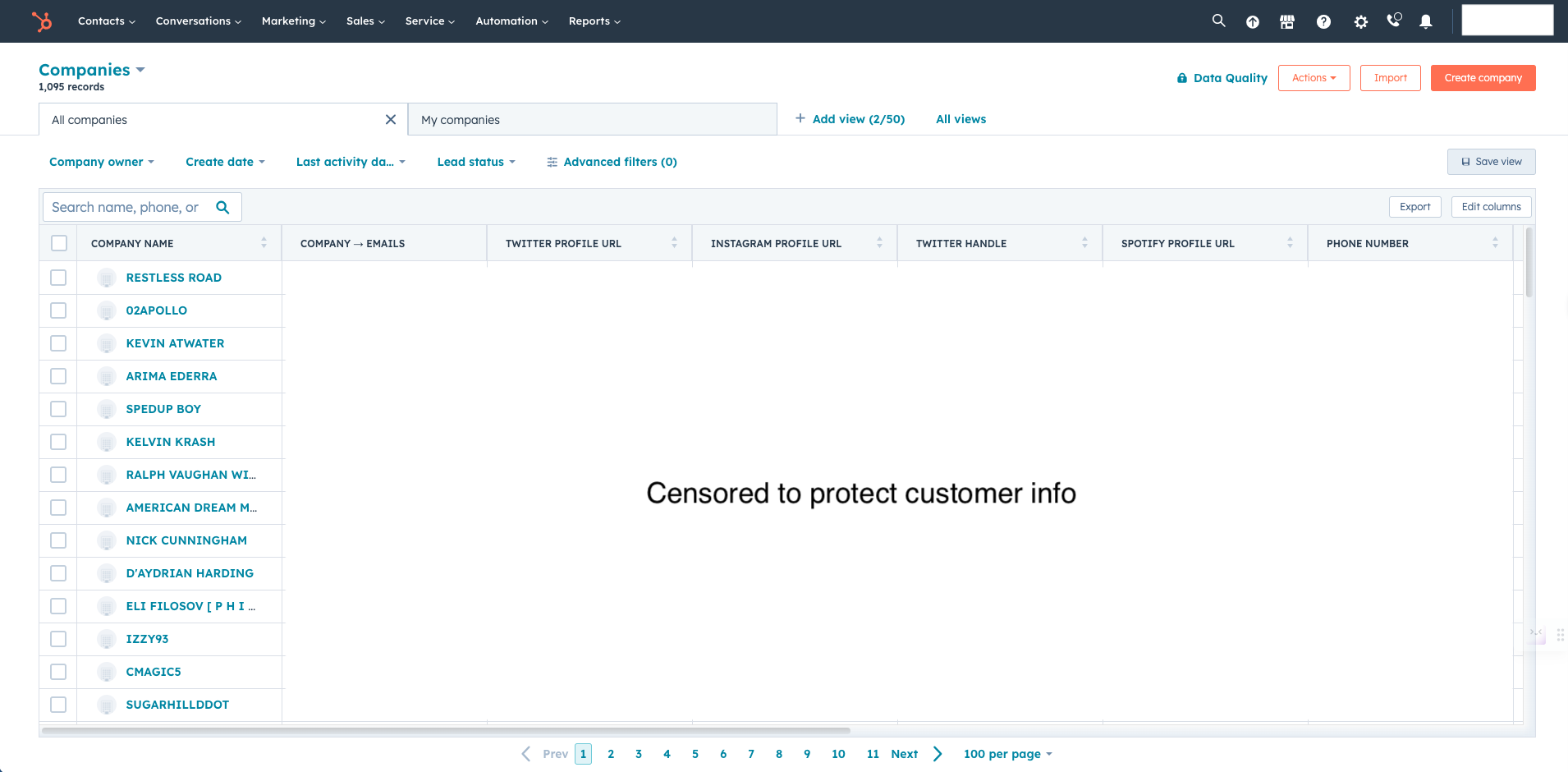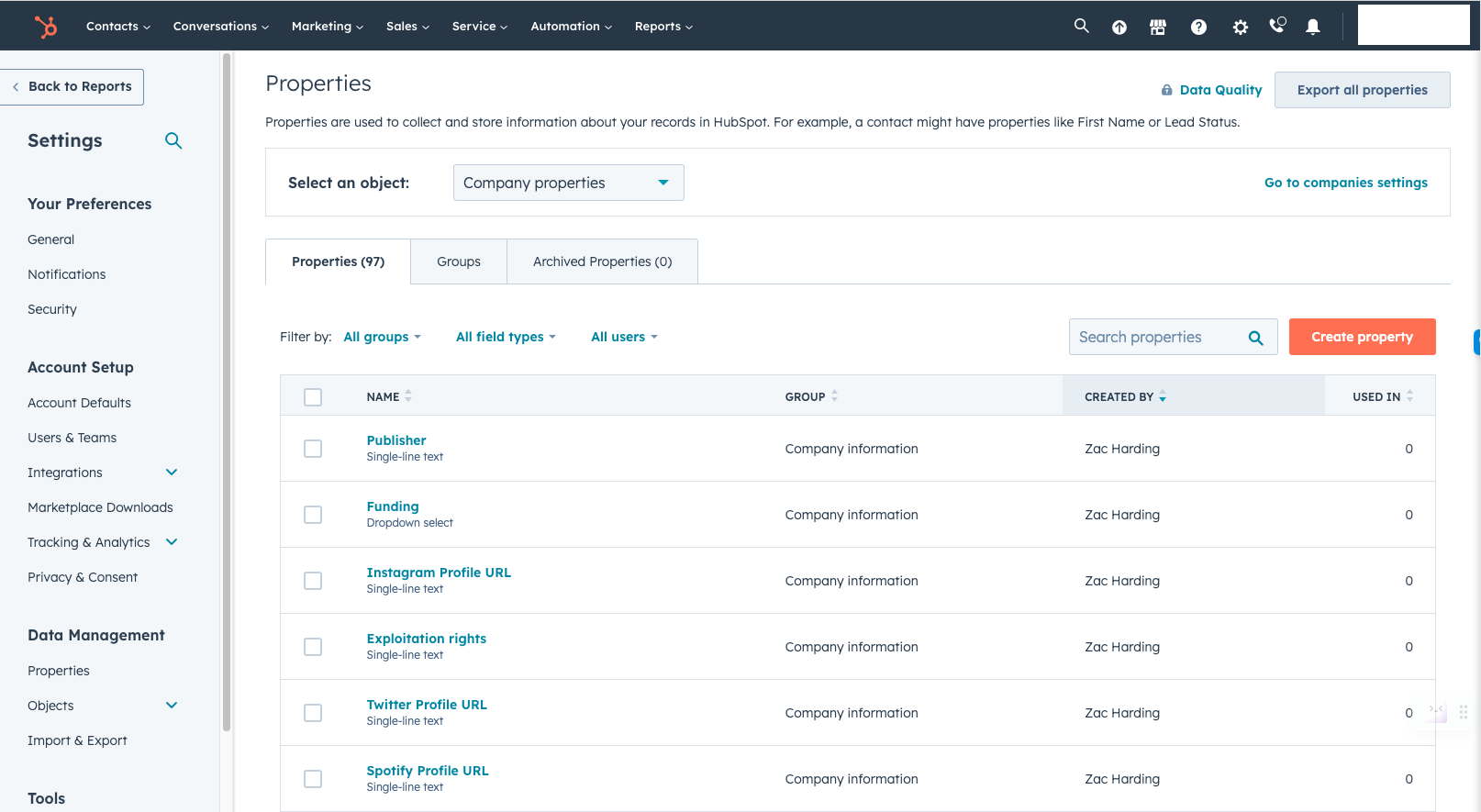Structuring Your CRM for the Music Industry
From the music industry to the manufacturing industry the concept is the same. You sell a product or service and the more you sell the better your company does. The interesting difference is that some industries have embraced sales enablement software and processes more than others.
An example is SaaS software sales teams. These teams are effective, fast, and flexible due to the tools and processes they have implemented. One of those tools is CRM or Customer Relationship Management software. A CRM can help you manage your sales outreach, tell how long on average the sales cycle takes, the average order size, and what triggers you can pull to close a deal faster.
I've been working in the music industry for 10+ years and I rarely come across CRMs, let alone one that is being used effectively. This is a detriment to the music industry causing billions of dollars in missed revenue. That's why I created this blog to showcase how to set up your CRM for the music industry!
So, How Is A CRM Usually Structured?
Part of the purpose of a CRM is to hold current and future customers' information. A CRM is usually structured around two types of data, Companies, and Contacts. Companies may also be called Accounts.
Now, for most industries this setup makes sense. You have a product or service you want to sell to businesses and to do so, you need to document which companies you are targeting and who in those companies you want to speak with. But, what if those you are targeting are music artists? Artists can have multiple members and stakeholders in any deal like their manager, publisher, or label. What would a CRM look like in this case?
After having implemented multiple CRMs for the music industry, I came to the conclusion that artists should be treated as Companies/Accounts. This is because Companies/Accounts can have multiple contacts and other companies/accounts attached to them. This means you can have the artist's name as the company and attached members and managers as contacts then attached their labels and publishers as related businesses. Seems simple but how does this look in practice?
Structuring Your CRM for the Music Industry
I will be using Hubspot to show you how I have set this up but you can use any CRM. I do recommend Hubspot due to the ability to start for free and add on as you go.
In this image, we are viewing the Company tab which shows the artists we are targeting for this specific music client.

The names in the Company Name column are all artists and each has multiple contacts and companies attached. Those contacts can include members, managers, lawyers, and any other related stakeholders. The companies attached include their label, management company, and publisher. Each contact includes their name, title, email, Twitter handle, Instagram handle, Spotify link, and phone number for outreach.
Many of those properties are not originally created by Hubspot so you will have to go in and add them. Depending on what you are trying to sell will give you more info on what properties you want in your CRM but let's look at an example of a business that sells advances and catalog purchases.
Customizing Your CRM's Properties
If you're selling distribution services you may want to have properties like Current Distributor, Monthly Listeners, and a Spotify Link to their profile. If you're selling services for labels you may want properties like Roster Size, and Average Yearly Royalties Distributed. It's all customizable but these properties are usually customized to help qualify if a prospect is a good fit for your service.

In this example, this company is building a broker service for advances and catalog purchases. Since they serve two sides of the market, they have properties to qualify both financiers and rightsholders. For rights-holders, we need to know where your royalties are coming from, how much you make, and who has exploitation rights. Since Amount is already a field, I've added new properties for Funding and Exploitation Rights.
If you have a question that helps qualify if an account or contact is a good fit then that is a sign it can be a very helpful property.
Cool, Now How Do I Track My Potential Deals
Now that you have the right targets and properties in your CRM, it's time to discuss Deals!
Deals are created when an account or contact shows interest in your product or service. This can occur over email or even by sending a custom video over Vidyard.
Deals go through stages. Those stages are different at each company but here is a simple example of common stages.
- Interest: Once a contact or account is interested, create a deal and place it in this stage. All future conversations and notes should be added to this deal and that activity will be tracked on the account and contact level attached to the deal. Make sure to plan a next step like a meeting, demo, or invite to your service.
- Demo: Now that they are interested, you may need to show your product or service more. You can now move the deal to this stage.
- Negotiation: With some companies, there are many more stages in-between Demo and Negotiation but in this example, once the contact or account has agreed to purchase your solution, you will need to negotiate the contract. Place the deal here during this stage.
- Closed won: Once the deal is won, place here. Congrats!
- Closed lost: If the deal is lost, place here.
Conclusion
Now you have a CRM that is set up to conquer the music industry!
If you'd like help setting up your CRM for the music industry and to dive in deeper then this blog, feel free to reach out to zac@salestempo.io.





